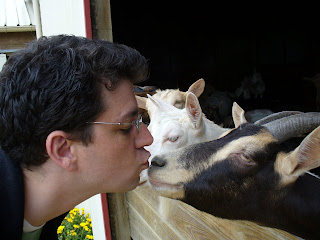Bonjour, dear readers, from Pont de Beauvoisin. We have had a lovely time visiting this gorgeous town. John and I stayed with a family in Pont de Beauvoisin, and Kent and David were with the president of the local Rotary Club a bit closer to Lyon, France.
 The GSE group and several members of the Tristan Rotary Club at the Gerflor flooring company.
The GSE group and several members of the Tristan Rotary Club at the Gerflor flooring company.
We haven’t been here very long, and we’re already packing up to leave. C’est dommage! Early Wednesday morning, we visited Gerflor, the third largest flooring company in the world and the second in Europe. After an extensive tour of the inner workings of flooring, seeing how the machinery works and speaking with some of the employees, we gathered at Michelle Bouchet’s (French GSE team leader) home for a meal and then to pack. Then, we were off again! The group left Pierrelatte and made our way up to a small town called Pont de Beauvoisin (Bridge of good neighbors), and we all got a chance to know our host families a little bit better. On Thursday, April 9, the group met up in Vienne, France. We were supposed to meet at the amphitheatre there, but Kent and David took a wrong turn and kept climbing up the hill to a gorgeous church overlooking the entire city. They definitely got the best photos of the day from their vantage point. Unfortunately they missed the amphitheatre, which was great, and enormous, with its 11,000 seats!
 The view of Vienne from the top of the amphitheatre steps.
The view of Vienne from the top of the amphitheatre steps.After lunch, we toured a museum displaying and explaining the Roman ruins that have been found in Vienne. This was a fascinating look at life almost 2,000 years ago.
 The GSE team with Stéphanie, a member of the French GSE team who will go to Texas in just a few days, in a plaza in Lyon.
The GSE team with Stéphanie, a member of the French GSE team who will go to Texas in just a few days, in a plaza in Lyon.Early Friday morning, we made our way to Lyon for a city tour. On the way, we stopped to pick up Kent, and I got a chance to talk with his host mother, who is the editor of a magazine in France. She worked on a magazine for the airlines, but now has just published the first issue of a magazine for airline passengers, including interesting articles about people and places in the locations to where the airline flies. They published 50,000 copies for the first issue, but plan to double that number in the future.
That evening, Kent and David had the pleasure of dining on coeur de boeuf and cooked carrots. If you don’t know what that is, check it out. An experience, to say the least. In another town, John and I ate pizza with our host father and his son. Later that night, the four of us had quite an interesting cultural exchange. Léo, our 16-year-old dinner partner, pulled out his iPod and showed us his music collection. Denis, our host father, popped in some CDs and exposed us to some great French music. Now we’ve exchanged e-mail addresses so we can continue to share our musical tastes after we return to the U.S.
Starting April 11, we were on our own in Grenoble because of the Easter holidays. In the hotel, we ran into an Englishman with his daughters to ski the French Alps nearby. He’s in the newspaper business – selling printing equipment. He told me that the problem with newspapers is also in Great Britain, but he seemed optimistic. Advertising, he said, is the first thing businesses cut back on in a recession. But it’s also the first thing businesses spend money on when things pick up, so he is optimistic that newspapers will be the first to recover from the economic downturn.
The team left the hotel to discover local shops. We met at 7:30 p.m. at the restaurant Le Dix Vin or 10 Wines for dinner underwritten by the Grenoble Rotary Club. We found ourselves alone in the restaurant until we left at 10 p.m. when the tables were filled with diners. It is difficult to get used to the late evening hours to which the French are so accustomed. The team returned to my room overlooking the busy Victor Hugo Plaza where we summarized the days’ events and sampled some of the consumable gifts we have accumulated along the way, including Easter chocolate. On Sunday, the team will meet at the gondola to ride to the top of the city for a view of the French Alps. Look eastward, and you just may see us waving bonjour! To all reading this, have a wonderful holiday, and we’ll catch you later.
Bonne nuit!

 This is the double-sided fire truck that is used to maneuver in the Mont Blanc tunnel during emergencies.
This is the double-sided fire truck that is used to maneuver in the Mont Blanc tunnel during emergencies.  The Mer de Glace.
The Mer de Glace. Kent checks out the view across the Mer de Glace.
Kent checks out the view across the Mer de Glace. John, our San Antonio police officer, poses with two officers from the Gendarmerie.
John, our San Antonio police officer, poses with two officers from the Gendarmerie. After the Gendarmerie got a call about an avalanche, the helicopter took off to scan the area for people buried in the snow.
After the Gendarmerie got a call about an avalanche, the helicopter took off to scan the area for people buried in the snow.  One of the officers prepares to leave to help with a possible rescue.
One of the officers prepares to leave to help with a possible rescue.
























